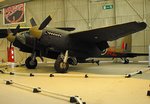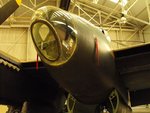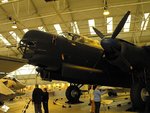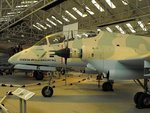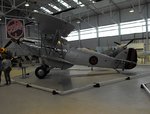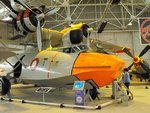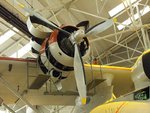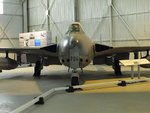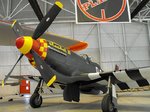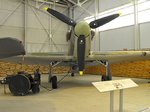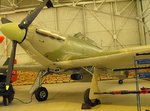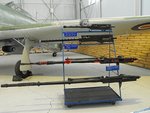Airframes
Benevolens Magister
Introduction.
Following on from a similar pictorial tour of Duxford last year, here's a tour of the 'second' RAF Museum at Cosford, UK.
Situated near the small town of Shifnal, not far from Telford in the County of Shropshire, the museum is located on an active RAF airfield. The base opened during the 'expansion period' of the RAF in the 1930s, as a Technical Training School, which purpose it still fulfils today.
Following the opening of the 'main' RAF Museum at Hendon, London, in November 1972, it was decided to centralise storage of what were known as 'Reserve Collections', scattered around various RAF airfields in the UK, which comprised a large number of aircraft, vehicles and other artefacts, which rarely saw the light of day. This eventually led to a storage facility being maintained at Stafford, and a second Museum facility being opened on the Cosford site in May 1979. This allowed a large number of valuable, and in many cases extremely rare aircraft, to be put on public display on one site, as well as the provision of a Restoration Facility. Here, aircraft and other exhibits undergo essential maintenance, preservation and, in cases of new exhibits, restoration as required.
With this organisation, exhibits can be presented in clean, un-cluttered conditions, and are also regularly rotated between the Cosford site and the main Museum at Hendon. (see elsewhere on the forum for news of the Dornier Do17 restoration project.)
Over the years, the facilities have been enlarged and improved, with the recent additions of a new Visitors Centre and a stunning, modern building which houses the 'Cold War' exhibition, of which more later.
Entrance to the Museum and its facilities is FREE, although there is a small charge for car parking, currently £3 for the full day. A visit to the Museum's web-site will provide lots of detailed information, including virtual tours of the main collections, past history and suggestions but, in brief, if you intend to visit the Museum, allow at least 5 to 6 hours for a worthwhile tour - and even at that, you will not get to see everything!
The Tour
On arrival, whether by car or coach, visitors enter the Museum via the Visitors Centre, where the Reception desk can be found, who's friendly staff can provide any information required, as well as brochures and guides. Also available are wheel-chairs and electric buggies for use by disabled visitors, and these are free of charge. This modern, light and airy building also houses the main restaurant, conference facilities, toilets etc, and a small display of flying kit in the main corridor. Access to all areas is via paved pathways, all of which are smooth, and disabled access is fundamental, with all hangars and galleries having automatic doors. Picnic areas are also situated in various parts of the site.
Passing down the main corridor, visitors exit into the first outdoor display area, before entering the main exhibition hangar, which houses displays covering the History of the RAF, Test Flight and War Planes.
My first aim on entering, was to obtain some detail shots of the Me410 and Dinah, for Andy and Glenn, before turning my attention to the rest of the exhibits. As with the Duxford tour, I'll post a group of shots at a time, with descriptions and background, as the pictorial tour proceeds throughout the whole Museum.
PIC 1. The Main Entrance to the Visitors Centre.
PIC 2. Visitors are greeted by a large, easy to follow diagram of the facilities and exhibitions.
PICS 3 and 4. Exhibits in the main access corridor include a large-scale model of a Sopwith camel, and cases displaying flying clothing from various eras.
PIC 5. The first outdoors exhibit, a HS Dominie, military variant of the HS125 'biz-jet'.
PIC 6. Former Royal Dutch Navy Neptune.
PIC 7. Entrance to the first double hangar and the main exhibitions.
PICS 8 and 9. One of the stars. Me410A-1/U2, Werke Nr. 420430, one of only two left from 1,160 built, the other being a A-2/U1, at the NASM, USA. This aircraft had served with 2/ZG26 at one time, the unit codes and insignia being found under later markings. Built by Messerschmitt at Augsburg, it was surrendered after being flown to Vaerlose, Denmark, in May 1945. I'll post some detail shots later, which were specifically obtained for Andy, following an advance request to the Museum (as were detail shots of the Dinah), and I'd like to thank the Museum's Assistant Curator, Clare Carr, and the hangar attendant, Ian, for their generous help and information.
The aircraft is currently undergoing maintenance and anti-corrosion inspection, which made for some interesting, and rare, opportunities to obtain the close-up images normally unobtainable to the general public.
PICS 10 and 11. Again, permission had been granted to cross the 'barrier' (actually very low, floor level rails), to gain access to otherwise unseen areas of the sole surviving Mitsubishi Ki- 46 'Dinah', and again, this aircraft was under maintenance and anti-corrosion inspection. My guide, Ian, showed me evidence of black, sandy dust found inside areas of the airframe, and we agreed this was possibly volcanic sand or coral.
PIC 12. The Kawasaki Ki-100-1b, built at the Kagamighara factory in June 1945.
I'll post more pics tomorrow but, meanwhile, I hope you enjoy the first part of the tour.
Following on from a similar pictorial tour of Duxford last year, here's a tour of the 'second' RAF Museum at Cosford, UK.
Situated near the small town of Shifnal, not far from Telford in the County of Shropshire, the museum is located on an active RAF airfield. The base opened during the 'expansion period' of the RAF in the 1930s, as a Technical Training School, which purpose it still fulfils today.
Following the opening of the 'main' RAF Museum at Hendon, London, in November 1972, it was decided to centralise storage of what were known as 'Reserve Collections', scattered around various RAF airfields in the UK, which comprised a large number of aircraft, vehicles and other artefacts, which rarely saw the light of day. This eventually led to a storage facility being maintained at Stafford, and a second Museum facility being opened on the Cosford site in May 1979. This allowed a large number of valuable, and in many cases extremely rare aircraft, to be put on public display on one site, as well as the provision of a Restoration Facility. Here, aircraft and other exhibits undergo essential maintenance, preservation and, in cases of new exhibits, restoration as required.
With this organisation, exhibits can be presented in clean, un-cluttered conditions, and are also regularly rotated between the Cosford site and the main Museum at Hendon. (see elsewhere on the forum for news of the Dornier Do17 restoration project.)
Over the years, the facilities have been enlarged and improved, with the recent additions of a new Visitors Centre and a stunning, modern building which houses the 'Cold War' exhibition, of which more later.
Entrance to the Museum and its facilities is FREE, although there is a small charge for car parking, currently £3 for the full day. A visit to the Museum's web-site will provide lots of detailed information, including virtual tours of the main collections, past history and suggestions but, in brief, if you intend to visit the Museum, allow at least 5 to 6 hours for a worthwhile tour - and even at that, you will not get to see everything!
The Tour
On arrival, whether by car or coach, visitors enter the Museum via the Visitors Centre, where the Reception desk can be found, who's friendly staff can provide any information required, as well as brochures and guides. Also available are wheel-chairs and electric buggies for use by disabled visitors, and these are free of charge. This modern, light and airy building also houses the main restaurant, conference facilities, toilets etc, and a small display of flying kit in the main corridor. Access to all areas is via paved pathways, all of which are smooth, and disabled access is fundamental, with all hangars and galleries having automatic doors. Picnic areas are also situated in various parts of the site.
Passing down the main corridor, visitors exit into the first outdoor display area, before entering the main exhibition hangar, which houses displays covering the History of the RAF, Test Flight and War Planes.
My first aim on entering, was to obtain some detail shots of the Me410 and Dinah, for Andy and Glenn, before turning my attention to the rest of the exhibits. As with the Duxford tour, I'll post a group of shots at a time, with descriptions and background, as the pictorial tour proceeds throughout the whole Museum.
PIC 1. The Main Entrance to the Visitors Centre.
PIC 2. Visitors are greeted by a large, easy to follow diagram of the facilities and exhibitions.
PICS 3 and 4. Exhibits in the main access corridor include a large-scale model of a Sopwith camel, and cases displaying flying clothing from various eras.
PIC 5. The first outdoors exhibit, a HS Dominie, military variant of the HS125 'biz-jet'.
PIC 6. Former Royal Dutch Navy Neptune.
PIC 7. Entrance to the first double hangar and the main exhibitions.
PICS 8 and 9. One of the stars. Me410A-1/U2, Werke Nr. 420430, one of only two left from 1,160 built, the other being a A-2/U1, at the NASM, USA. This aircraft had served with 2/ZG26 at one time, the unit codes and insignia being found under later markings. Built by Messerschmitt at Augsburg, it was surrendered after being flown to Vaerlose, Denmark, in May 1945. I'll post some detail shots later, which were specifically obtained for Andy, following an advance request to the Museum (as were detail shots of the Dinah), and I'd like to thank the Museum's Assistant Curator, Clare Carr, and the hangar attendant, Ian, for their generous help and information.
The aircraft is currently undergoing maintenance and anti-corrosion inspection, which made for some interesting, and rare, opportunities to obtain the close-up images normally unobtainable to the general public.
PICS 10 and 11. Again, permission had been granted to cross the 'barrier' (actually very low, floor level rails), to gain access to otherwise unseen areas of the sole surviving Mitsubishi Ki- 46 'Dinah', and again, this aircraft was under maintenance and anti-corrosion inspection. My guide, Ian, showed me evidence of black, sandy dust found inside areas of the airframe, and we agreed this was possibly volcanic sand or coral.
PIC 12. The Kawasaki Ki-100-1b, built at the Kagamighara factory in June 1945.
I'll post more pics tomorrow but, meanwhile, I hope you enjoy the first part of the tour.
Attachments
-
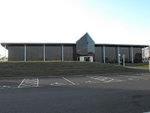 Cosford 493.jpg73.3 KB · Views: 254
Cosford 493.jpg73.3 KB · Views: 254 -
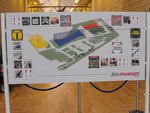 Cosford 492.jpg125 KB · Views: 242
Cosford 492.jpg125 KB · Views: 242 -
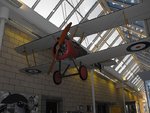 Cosford 490.jpg105.5 KB · Views: 238
Cosford 490.jpg105.5 KB · Views: 238 -
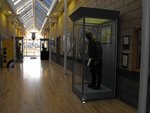 Cosford 491.jpg91.4 KB · Views: 244
Cosford 491.jpg91.4 KB · Views: 244 -
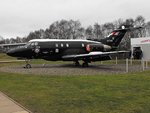 Cosford 003.jpg140.4 KB · Views: 251
Cosford 003.jpg140.4 KB · Views: 251 -
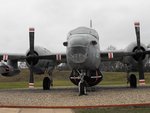 Cosford 006.jpg104.2 KB · Views: 244
Cosford 006.jpg104.2 KB · Views: 244 -
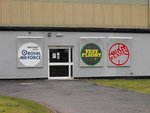 Cosford 016.jpg102.9 KB · Views: 255
Cosford 016.jpg102.9 KB · Views: 255 -
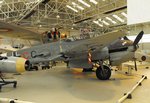 Cosford 094.jpg93.2 KB · Views: 250
Cosford 094.jpg93.2 KB · Views: 250 -
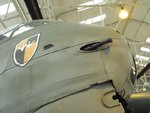 Cosford 049.jpg82.8 KB · Views: 246
Cosford 049.jpg82.8 KB · Views: 246 -
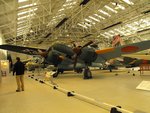 Cosford 126.jpg124.5 KB · Views: 248
Cosford 126.jpg124.5 KB · Views: 248 -
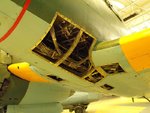 Cosford 071.jpg89.5 KB · Views: 254
Cosford 071.jpg89.5 KB · Views: 254 -
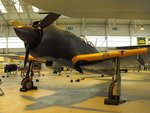 Cosford 099.jpg99.8 KB · Views: 252
Cosford 099.jpg99.8 KB · Views: 252

